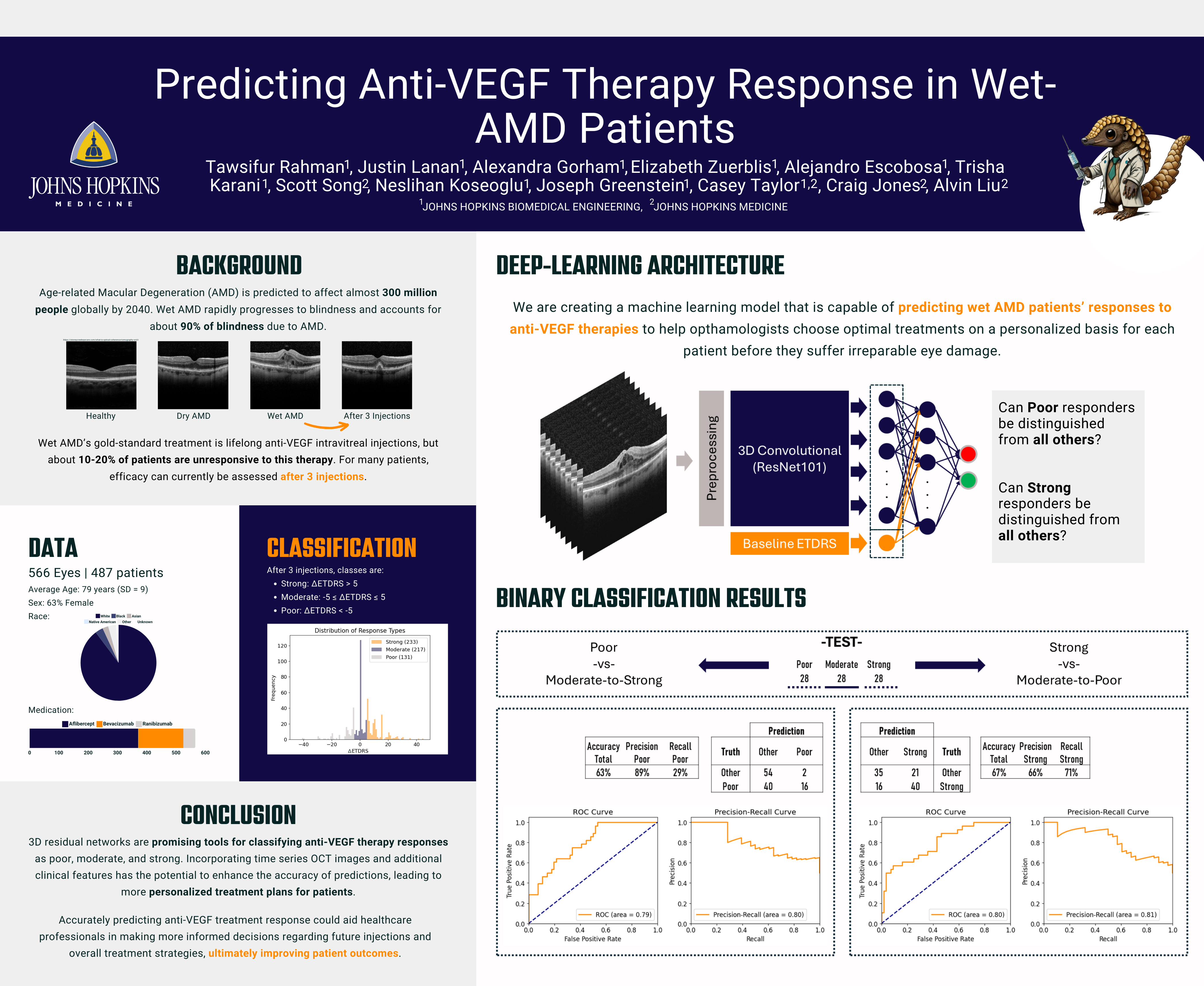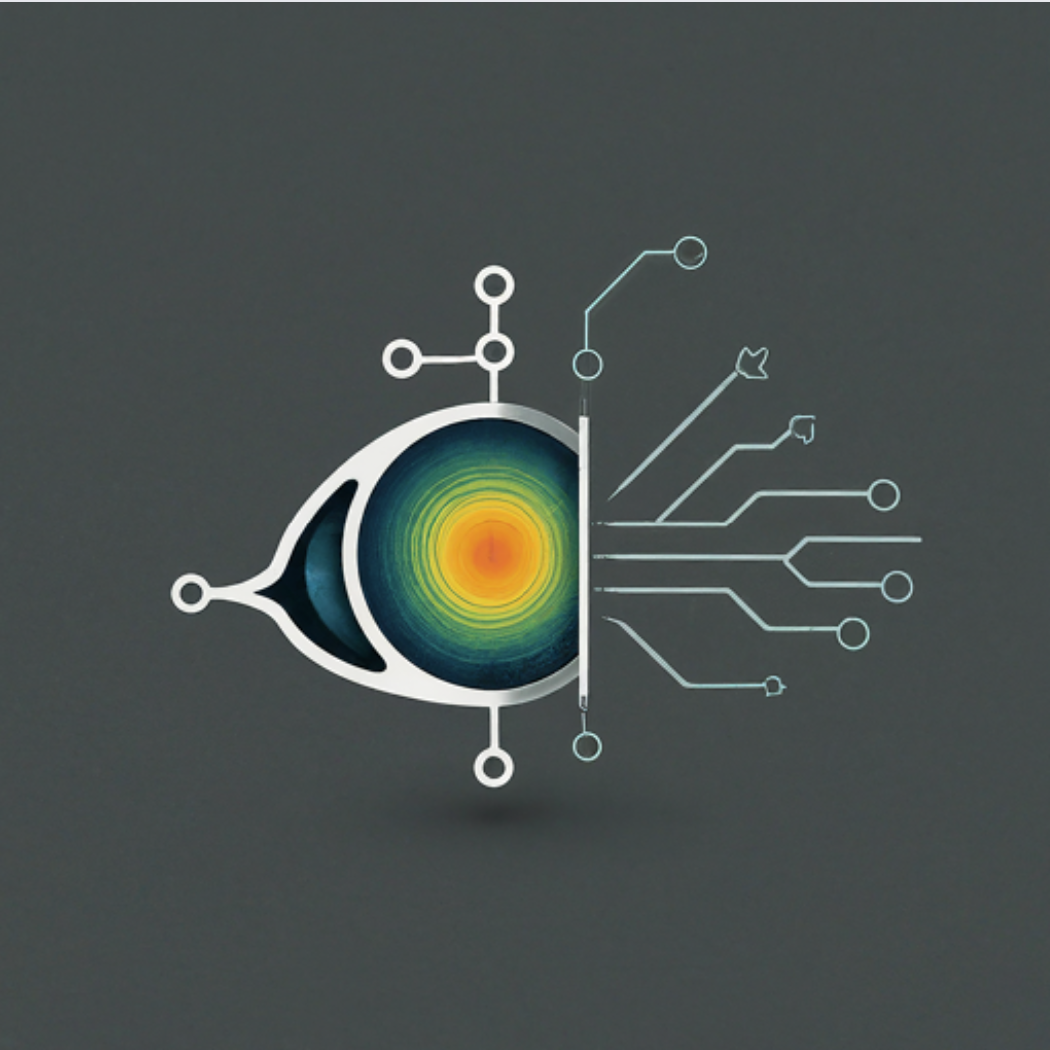Predicting Anti-VEGF Therapy Response in Wet-AMD Patients
- Program: Biomedical Engineering
- Course: EN.580.480 Precision Care Medicine
Project Description:
In this project, we aim to predict wet age-related macular degeneration patients’ responses to anti-VEGF therapies using machine learning. Wet age-related macular degeneration (AMD) is the leading cause of vision loss in people over 50 and is known for its rapid progression, making ophthalmologists’ early and decisive treatment selection critical in maintaining quality of life for the patient. Anti-VEGF injections are the current gold-standard treatment, but they do not work for about 15-20% of patients. We are using data collected through an IRB with the Johns Hopkins Wilmer Eye Insitute to train a machine learning algorithm to predict whether an eye will respond well to anti-VEGF therapy to allow ophthalmologists to make personalized treatment plans for wet AMD patients.
Project Poster
 Open full size poster in new tab (PDF)
Open full size poster in new tab (PDF)
Project Post Summary:
Age-related macular degeneration (AMD) is the leading cause of vision loss among people over 50, with the wet form of the disease being particularly aggressive due to its rapid progression. Early diagnosis and timely treatment are crucial in managing wet AMD to preserve patients’ quality of life. Upon diagnosis, ophthalmologists typically initiate immediate treatment with monthly anti-vascular endothelial growth factor (anti-VEGF) injections, which have been established as the gold-standard therapy for wet AMD. However, about 15-20% of patients do not respond favorably to these injections, highlighting a need for a more personalized approach to treatment. This project aims to leverage machine learning to predict wet AMD patients’ responses to anti-VEGF therapies, enabling ophthalmologists to create customized treatment plans. Data collected through an Institutional Review Board (IRB) at the Johns Hopkins Wilmer Eye Institute provided the foundation for training a machine learning algorithm. Specifically, the study used a 3D residual network to classify anti-VEGF therapy responses into two comparisons: poor vs. (moderate + strong) and (poor + moderate) vs. strong, yielding accuracies of 63% and 67%, respectively. To improve prediction accuracy, future studies should use optical coherence tomography (OCT) images taken at various stages of treatment along with additional clinical features. By refining the deep learning model with these additional inputs, we aim to enhance the algorithm’s predictive capabilities, supporting ophthalmologists in making more informed decisions regarding patient treatment. This approach could lead to more effective therapy selection, optimizing outcomes for patients with wet AMD.
Student Team Members
- Tawsifur Rahman
- Justin Lanan
- Alexandra Gorham
- Elizabeth Zuerblis
- Alejandro Escobosa
- Trisha Karani
Course Faculty
- Joseph L Greenstein
- Casey Overby Taylor



